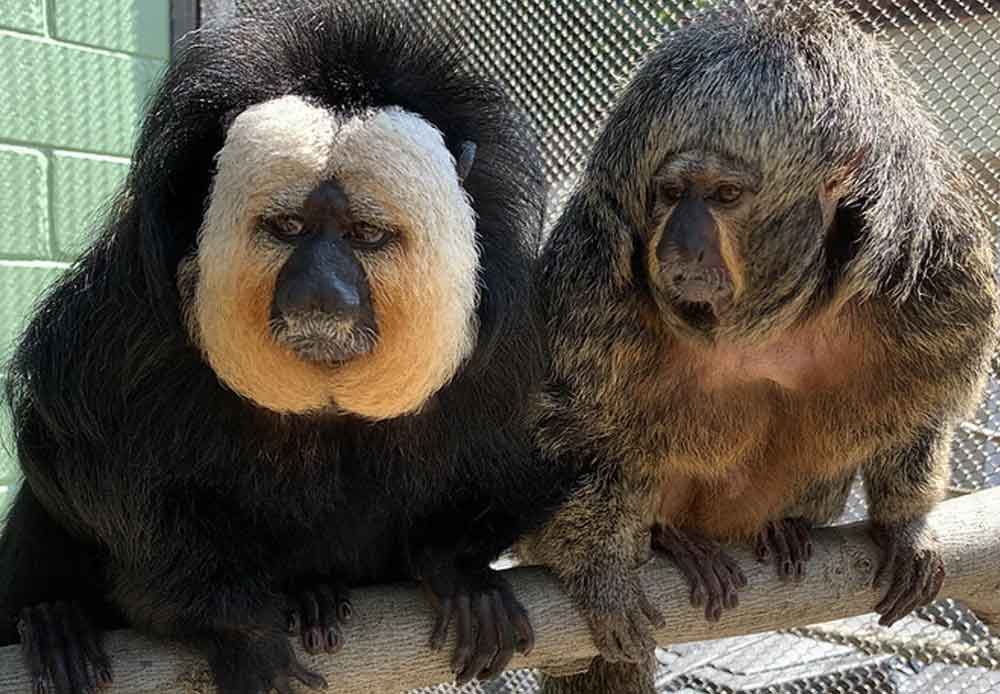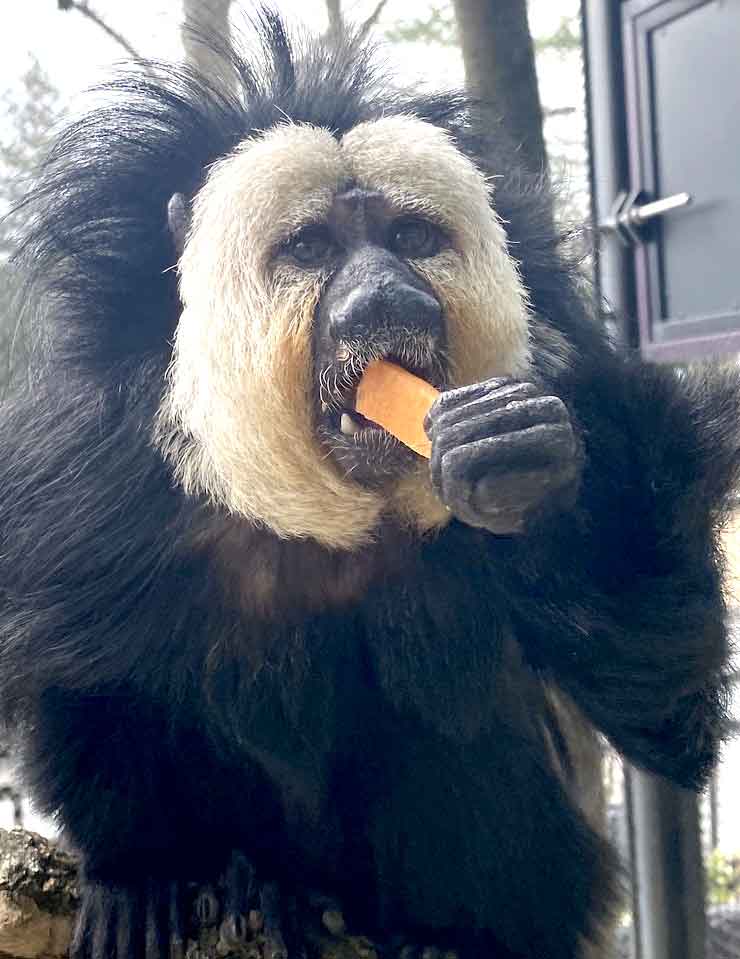Meet Our Animals
The Brandywine Zoo proves that great things do come in small packages. The Zoo features animals from the tropical and temperate areas of North and South America, Asia and Africa. Our animals range from more common species to the highly endangered. All enjoy natural settings and welcome your visit to the zoo. Some animals may be off exhibit during cold weather.
Pithecia pithecia
White-faced Saki

Habitat
Geographic Region & Range
Diet
Physical Description
Dimorphic (males and females look different) – males are black with white faces, females are gray. Their distinctive white facial discs give them their name.
Lifespan
Natural Habitat: 15 years
Under Human Care: mid-thirties
Threats
Status

What are AZA Zoos doing for
White-faced Saki
Their zoo population is managed through conservation breeding programs called Species Survival Plan programs (SSP), which ensures genetic diversity and species health. Their SSP is coordinated by the New World Primate Taxon Advisory Group. The Como Park Zoo is the program leader for the white-faced saki. As of 2020, there were around 135 white-faced saki in AZA facilities.
Fun Facts
Their lower front teeth are specialized for opening nuts and tough fruits. This helps them get to the nutritious seeds hidden within.
Their thick tails are not prehensile, meaning that they don’t wrap or grip like some other primates. Instead their tails are used for balance while jumping through the trees.
Saki monkeys do not grasp tree branches between their index finger and thumb, as humans would. Instead, their grasp falls between the index finger and middle finger, so that 3 fingers are on one side and a finger and thumb on the other.
